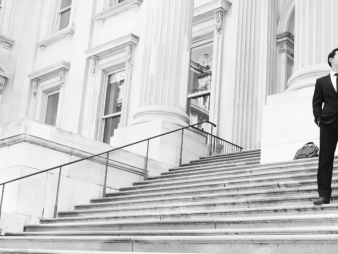Evidence plays the lead role in the grand theater of civil litigation. It helps to establish the facts of a case, support legal claims, and assists the trier of fact (judge or jury) in rendering fair decisions. The quality, quantity, admissibility, and presentation of a party’s evidence will make or break their case. Thus, understating what constitutes evidence, and the rules that govern its admissibility, is essential to civil litigation.
The Foundation of Proof: What Constitutes Evidence?
Evidence encompasses a wide array of complex information, from witness testimony to physical objects and documents, each type with their own benefits and specifications. Common types of evidence include, but are not limited to:
- Testimonial Evidence: Frequently thought of as direct evidence, this includes statements made by witnesses under oath who have seen or heard the facts about which they testify.
- Circumstantial Evidence: This is evidence that naturally and logically flows from other evidence according to the common experience of most people.The “footprints in the snow” example is used to better describe this principle: If you go to bed one evening while it’s snowing and wake up to find footprints in the snow across your lawn, even though you did not see a person walk across your lawn, the footprints in the snow provide circumstantial evidence that it occurred.
- Documentary Evidence: Containing a record of some kind, documents such as contracts, emails, medical records, and financial statements often serve as critically reliable evidence.
- Physical Evidence: Tangible objects, such as weapons, clothing, or damaged property, can paint a vivid picture of the events leading to a lawsuit.
- Demonstrative Evidence: Charts, photographs, maps, and diagrams offer a key visual illustration to clarify or summarize complicated concepts.
- Expert Testimony: Expert witnesses can provide opinion testimony based upon their specialized knowledge, education, and skill. The qualifications of expert witnesses are closely scrutinized to ensure their reliability.
Navigating Ohio’s Rules of Evidence: Fundamental Principles
To maintain fairness and efficiency in the courtroom, the admissibility of evidence is governed by the Ohio Rules of Evidence. Ohio, like most states, bases its evidence rules upon the Federal Rules of Evidence. These rules provide a framework for attorneys to present evidence effectively while allowing judges to make informed and just decisions.
Here are a few key principles:
- Relevance: Evidence must be relevant to the case at hand to be admissible, meaning that it tends to prove or disprove a fact in question.
- Authentication: To be admitted at trial, evidence must also be properly authenticated. This involves “laying a foundation” or demonstrating that the evidence is what it purports to be.
- Privileged Information: Certain evidence and communications may be relevant, but protected from being introduced by privileges, such as the attorney-client privilege or doctor-patient privilege.
- Hearsay: Hearsay is an out-of-court statement offered by someone testifying in court to prove the truth of the matter asserted. Hearsay evidence is generally deemed unreliable and not admissible. However, there are many exceptions to the hearsay rule, such as statements about someone’s then existing state of mind, or excited utterances.
The Trial: Where Evidence Takes Center Stage
When a civil case goes to trial in Ohio, the presentation of evidence unfolds like a carefully choreographed dance. Attorneys meticulously lay the groundwork for their arguments, introducing evidence to support their client’s claims and challenging the evidence presented by the opposing side. Skilled litigators are well versed in the rules of evidence and present evidence in a way that builds the best case for their clients.
The Role of the Judge: The judge acts as the gatekeeper of evidence and rules on objections raised by attorneys regarding the admissibility of evidence. It is the role of the judge to ensure that all evidence is admitted pursuant to Ohio’s Rules of Evidence.
The Jury’s Duty: If a jury is present, its members are responsible for evaluating the evidence presented. They must assess the credibility of the witnesses, consider the weight of all evidence, and then decide the facts to render a just verdict.
Conclusion: Upholding Justice Through Evidence
Evidence reigns supreme in Ohio’s civil courts. It is the thread that weaves together the narrative of a legal dispute, guiding judges and juries toward a just resolution. Whether in witness testimony, documents, or expert opinions, evidence is the cornerstone of litigation. Indeed, the presentation of evidence can make or break your case!
Critchfield attorneys understand the nuances and significance of evidence in civil litigation and are well versed in Ohio’s Evidence Rules. With years of trial experience – Critchfield’s litigators work to always build the best evidence based case for their clients. As always, if you are involved in litigation, our firm recommends that you seek competent legal counsel to assist you.
**Attorney/Author Amanda Webber extends her thanks to summer legal clerk Kayla Hofmeister (J.D. expected 2025) for her assistance in writing this post.
Tagged In:evidenceLitigation




